 | TODAY IN SCIENCE HISTORY
NEWSLETTER - 6 MARCH |
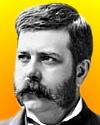 On 6 Mar 1886, America's first alternating current power plant began operation in Great Barrington, Massachussetts. George Westinghouse demonstrated transmission at 500 volts for 4000 feet, with a step-down for lights in stores. On 6 Mar 1886, America's first alternating current power plant began operation in Great Barrington, Massachussetts. George Westinghouse demonstrated transmission at 500 volts for 4000 feet, with a step-down for lights in stores.
The technical work was accomplished by William Stanley, who later described in a 1912 meeting of the AIEE what was involved to get the demonstration project up and running. You can read an extract from his paper on Alternating Current Development in America, with description of the steam engine for powering the alternator that will evoke a delightful vision for you of the "serious and obstinate difficulties" that accompany such pioneering work.
|
 On 6 Mar 1879, Benton MacKaye, was born, an American forester and conservationist and regional planner, who was instrumental in creating a 2,000-mile footpath. But he accomplished so much more than that. Today's Science Store pick is Benton MacKaye: Conservationist, Planner, and Creator of the ... Trail, by Larry Anderson. The author explores the philosophy behind this Trail, and gives a splendid biography of a man who was a pioneer in in linking the concepts of preservation, recreation and environmental thought. Telling the story of a man's work spanning three-quarters of a century detailing how he dealt with the inner workings of the intellectual networks, social relationships, governmental and business institutions, particular projects, and downright good and bad luck that constitute the fabric of historical movements such as conservation and regional planning. Price $56.00. Also available Used from $17.75 (as of time of writing). On 6 Mar 1879, Benton MacKaye, was born, an American forester and conservationist and regional planner, who was instrumental in creating a 2,000-mile footpath. But he accomplished so much more than that. Today's Science Store pick is Benton MacKaye: Conservationist, Planner, and Creator of the ... Trail, by Larry Anderson. The author explores the philosophy behind this Trail, and gives a splendid biography of a man who was a pioneer in in linking the concepts of preservation, recreation and environmental thought. Telling the story of a man's work spanning three-quarters of a century detailing how he dealt with the inner workings of the intellectual networks, social relationships, governmental and business institutions, particular projects, and downright good and bad luck that constitute the fabric of historical movements such as conservation and regional planning. Price $56.00. Also available Used from $17.75 (as of time of writing). Yesterday's pick: Mr Tompkins in Paperback (containing Mr. Tompkins in Wonderland and Mr. Tompkins Explores the Atom) by George Gamow.
For picks from earlier newsletters, see the Today in Science Science Store home page. | |
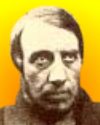
| "A nutritive centre, anatomically considered, is merely a cell, the nucleus of which is the permanent source of successive broods of young cells, which from time to time fill the cavity of their parent, and carrying with them the cell wall of the parent, pass off in certain directions, and under various forms, according to the texture or organ of which their parent forms a part."
- John Goodsir, Scottish anatomist who was one of the earliest and most acute observers of cell-life. (died 6 Mar 1867)  |
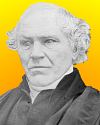 | "The hypotheses which we accept ought to explain phenomena which we have observed. But they ought to do more than this; our hypotheses ought to foretell phenomena which have not yet been observed; ... because if the rule prevails, it includes all cases; and will determine them all, if we can only calculate its real consequences. Hence it will predict the results of new combinations, as well as explain the appearances which have occurred in old ones. And that it does this with certainty and correctness, is one mode in which the hypothesis is to be verified as right and useful."
- William Whewell, English scholar and philosopher. (died 6 Mar 1866)  |
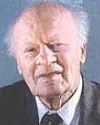 | "We need science education to produce scientists, but we need it equally to create literacy in the public. Man has a fundamental urge to comprehend the world about him, and science gives today the only world picture which we can consider as valid. It gives an understanding of the inside of the atom and of the whole universe, or the peculiar properties of the chemical substances and of the manner in which genes duplicate in biology. An educated layman can, of course, not contribute to science, but can enjoy and participate in many scientific discoveries which as constantly made. Such participation was quite common in the 19th century, but has unhappily declined. Literacy in science will enrich a person's life."
- Hans Albrecht Bethe, German-American theoretical physicist. (died 6 Mar 2005)  |
| Before you look at today's web page, see if you can answer some of these questions about the events that happened on this day. Some of the names are very familiar. Others will likely stump you. Tickle your curiosity with these questions, then check your answers on today's web page. |
 |  Benton MacKaye, born 6 Mar 1879, was an American forester and conservationist and regional planner, who was instrumental in creating a 2,000-mile footpath from Maine to Georgia. Benton MacKaye, born 6 Mar 1879, was an American forester and conservationist and regional planner, who was instrumental in creating a 2,000-mile footpath from Maine to Georgia.  What is the name of this footpath? What is the name of this footpath? |
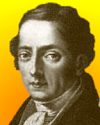 |  A German physicist, born 6 Mar 1787, first studied the dark lines of the Sun's spectrum, now known by his name. He also was the first to use extensively the diffraction grating, a device that dispenses light in much the same way a prism does. A German physicist, born 6 Mar 1787, first studied the dark lines of the Sun's spectrum, now known by his name. He also was the first to use extensively the diffraction grating, a device that dispenses light in much the same way a prism does.  Can you name this scientist? Can you name this scientist? |
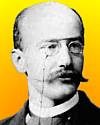 |  Ferdinand von Lindemann (1852-1939) was a German mathematician who was the first to prove that the number pi is transcendental. Ferdinand von Lindemann (1852-1939) was a German mathematician who was the first to prove that the number pi is transcendental.
 What is the meaning of transcendental? What is the meaning of transcendental? |

|  On 6 Mar of a certain year, Clarence Birdseye put the first individually packaged frozen foods on sale in Springfield, Mass. Birdseye got his idea after seeing Canadians thawing and eating naturally frozen fish. On 6 Mar of a certain year, Clarence Birdseye put the first individually packaged frozen foods on sale in Springfield, Mass. Birdseye got his idea after seeing Canadians thawing and eating naturally frozen fish.  In what decade did Birdseye begin selling frozen foods. In what decade did Birdseye begin selling frozen foods. |

|  The date 6 Mar 1913 was written on a paper written by a scientist who described his new ideas on atomic structure, and mailed to his mentor, Ernest Rutherford. It was one of three historic papers he wrote on this subject. The date 6 Mar 1913 was written on a paper written by a scientist who described his new ideas on atomic structure, and mailed to his mentor, Ernest Rutherford. It was one of three historic papers he wrote on this subject.  Can you name the scientist known for his model of atomic structure? Can you name the scientist known for his model of atomic structure? |
When you have your answers ready to all the questions above, you'll find all the information to check them, and more, on the March 6 web page of Today in Science History. Or, try this link first for just the brief answers.
Fast answers for the previous newsletter for March 5: The decade including the year 1907; Gerardus Mercator; Alessandro Giuseppe Antonio Anastasio Volta; jets of oxygen to assist heating lime to incandescence; Copernicus. |
 If you enjoy this newsletter, the website, or wish to offer encouragement or ideas, please send feedback by using your mail reader Reply button. If you enjoy this newsletter, the website, or wish to offer encouragement or ideas, please send feedback by using your mail reader Reply button. |
--
If you do not want to receive any more newsletters,
Unsubscribe To update your preferences and to unsubscribe visit
this link 


 On 6 Mar 1886, America's first alternating current power plant began operation in Great Barrington, Massachussetts. George Westinghouse demonstrated transmission at 500 volts for 4000 feet, with a step-down for lights in stores.
On 6 Mar 1886, America's first alternating current power plant began operation in Great Barrington, Massachussetts. George Westinghouse demonstrated transmission at 500 volts for 4000 feet, with a step-down for lights in stores.



 Benton MacKaye, born 6 Mar 1879, was an American forester and conservationist and regional planner, who was instrumental in creating a 2,000-mile footpath from Maine to Georgia.
Benton MacKaye, born 6 Mar 1879, was an American forester and conservationist and regional planner, who was instrumental in creating a 2,000-mile footpath from Maine to Georgia.  What is the name of this footpath?
What is the name of this footpath?
 A German physicist, born 6 Mar 1787, first studied the dark lines of the Sun's spectrum, now known by his name. He also was the first to use extensively the diffraction grating, a device that dispenses light in much the same way a prism does.
A German physicist, born 6 Mar 1787, first studied the dark lines of the Sun's spectrum, now known by his name. He also was the first to use extensively the diffraction grating, a device that dispenses light in much the same way a prism does.  Can you name this scientist?
Can you name this scientist? 
 Ferdinand von Lindemann (1852-1939) was a German mathematician who was the first to prove that the number pi is transcendental.
Ferdinand von Lindemann (1852-1939) was a German mathematician who was the first to prove that the number pi is transcendental. What is the meaning of transcendental?
What is the meaning of transcendental? 
 On 6 Mar of a certain year, Clarence Birdseye put the first individually packaged frozen foods on sale in Springfield, Mass. Birdseye got his idea after seeing Canadians thawing and eating naturally frozen fish.
On 6 Mar of a certain year, Clarence Birdseye put the first individually packaged frozen foods on sale in Springfield, Mass. Birdseye got his idea after seeing Canadians thawing and eating naturally frozen fish.  In what decade did Birdseye begin selling frozen foods.
In what decade did Birdseye begin selling frozen foods. 
 The date 6 Mar 1913 was written on a paper written by a scientist who described his new ideas on atomic structure, and mailed to his mentor, Ernest Rutherford. It was one of three historic papers he wrote on this subject.
The date 6 Mar 1913 was written on a paper written by a scientist who described his new ideas on atomic structure, and mailed to his mentor, Ernest Rutherford. It was one of three historic papers he wrote on this subject.  Can you name the scientist known for his model of atomic structure?
Can you name the scientist known for his model of atomic structure?  If you enjoy this newsletter, the website, or wish to offer encouragement or ideas, please send feedback by using your mail reader Reply button.
If you enjoy this newsletter, the website, or wish to offer encouragement or ideas, please send feedback by using your mail reader Reply button. 

Δεν υπάρχουν σχόλια:
Δημοσίευση σχολίου